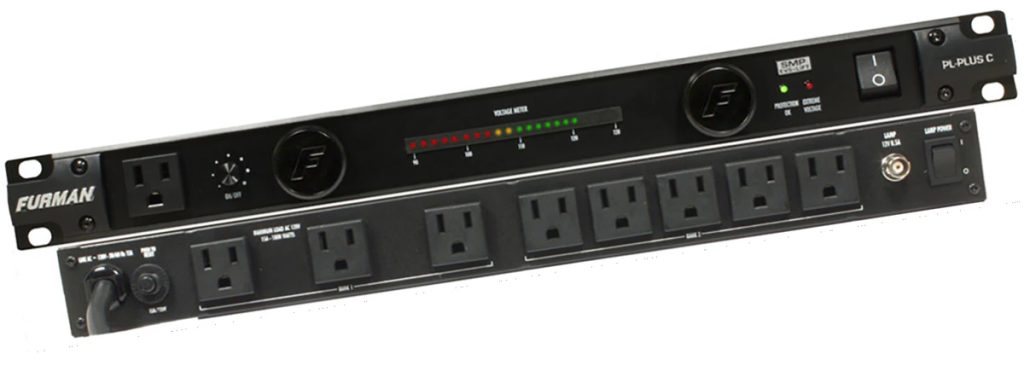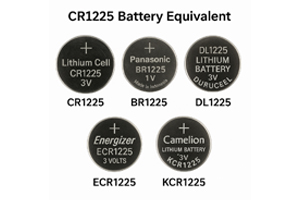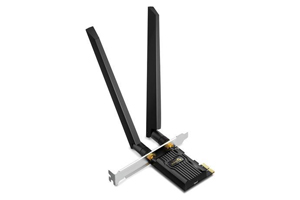Pourquoi acheter un conditionneur de tension ? Comprendre l'importance de la régulation de tension
Author:admin Date: 2025-04-08 09:59 Views:585
What Is a Power Conditioner and What Does It Do?
- Introduction
- Reasons for Getting a Power Conditioner
- Causes of Voltage Fluctuations
- How a Power Conditioner Works
- Types of Power Conditioners
- Key Features to Consider When Buying a Power Conditioner
- Difference Between A Power Conditioner and A Surge Protector
- Difference Between a Power Conditioner and A Line Conditioner
- How to Install a Power Conditioner
- Maintenance Tips for Power Conditioners
- Conclusion
Introduction

Furman Power Conditioner
Many people use protection devices for their electronics. The aim is to ensure their devices do not get damaged by surges, voltage fluctuations, and similar scenarios. Having a power conditioner is one way to protect your devices.
UN power conditioner is a device that improves the power quality reaching an electrical load such as equipment or appliances. This is done by voltage regulation, noise filtering, waveform correction, and noise filtering of the power. It can still help protect the device against power surges.
Reasons for Getting a Power Conditioner
Many benefits come with a Furman power conditioner or from any other brand. Below is what you should expect when you get one.
1. Surge Protection
Surges might not be common, but they can happen. So, it is best to always have the protection when it happens. The job of the power conditioner is to shield the equipment from sudden voltage spikes and surges. This prevents potential damage resulting from power fluctuations or lightning strikes.
2. Voltage Stabilization
A stable and consistent voltage supply to the device is vital for its performance. This ensures that the device is not damaged by high and low voltage conditions.
3. Noise Filtering
Electrical noise is not what you need for certain sensitive electronics. Power conditioners help filter out electrical noise and power line interference, resulting in a cleaner and more stable power supply for sensitive electronics.
4. Improved Performance and Longevity
When you use a generator power conditioner, you end up with enhanced equipment performance. This is because you will provide a cleaner and more stable power supply.
Proper regulation of voltage fluctuation and weeding out noise will greatly improve a device’s lifespan.
5. Improved Sound Quality
You can use an audio power conditioner to eliminate interference and noise, which often degrade the sound quality. As a result, you get a cleaner and enjoyable listening experience.
The same applies to recording studios. The last thing they need is noise and interference. As such, a power conditioner helps improve recording quality, resulting in more professional sound quality.
Causes of Voltage Fluctuations
Voltage fluctuations happen and can be a big deal, especially for sensitive electronics. That is why we need a power conditioner to smoothen it out. However, where does it all come from?
- Power demand fluctuations can be the first reason. This is when there is a sudden change in the electrical load. A rapid decrease or increase in the electrical load can strain the grid, leading to voltage fluctuations.
- Electrical disturbances such as lightning strikes, grid faults, and more can lead to voltage fluctuations. For example, when lightning strikes, expect a surge or spike in the power grid. The same goes for strong winds or trees touching the power line causing fluctuations.
- Insufficient generation capacity to meet the demands also causes voltage fluctuations. It is the same when an overloaded or congested grid leads to voltage drops and fluctuations.
- Faulty wiring and equipment also mean inconsistent voltage needs. So, check for poor electrical wiring, loose connections, and damaged cables that might introduce system resistance. Still, aging equipment might become less efficient and more prone to causing voltage fluctuations.
You can see why it is vital to get a whole-house power conditioner to help keep the equipment and appliances in your house safe.
How a Power Conditioner Works
A power conditioner addresses various issues in the electrical supply. It regulates voltage, provides surge protection, filters interference and noise, and ensures a stable, clean power supply.
In terms of voltage regulation, it uses mechanisms such as an automatic voltage regulator to ensure there is a consistent voltage level even if the incoming power has fluctuations.
Le rack-mount power conditioner also comes with capacitors and inductors to filter noise and interference in the electricity. This is vital for ensuring the sensitive electronics work as expected.
We cannot forget to mention its surge protection capabilities. It often has protection circuits such as Metal Oxide Varistors or MOVs, which protect against power spikes and surges. At least you are sure the surge will not reach the connected equipment.
UN whole-home power conditioner will also manage harmonic distortion in the power supply, resulting in good power quality overall.
So, when should you use power conditioners? If there has been a history of power surges, have it in place always. Also, you might be working with sensitive electronics such as medical devices, computers, and more. Simply have the power conditioner in place as a protective measure.
Types of Power Conditioners
When seeking the best AC power conditioner for recording studios, there are two main types: active and passive power conditioners.
Active Power Conditioners
These power conditioners continuously monitor the power supply and utilize their electronic circuits to stabilize it in case of issues. This is done by generating compensatory currents vital for stabilizing the power line. When this happens, the power conditioner can ultimately stabilize the power supply by eliminating harmonics and reactive power.
One thing about active power conditioners is that they are highly advanced in terms of operation. They can detect power imperfections in real time and work to rectify them.
Such power conditioners are commonly used in industrial setups where electronics need clean power. They could also be used with sensitive equipment in data centers and medical facilities.
Passive Power Conditioners
Passive power conditioners use a combination of resistors, capacitors, and inductors to filter noise and rescue harmonics in the power supply. The result is having improved power quality.
These power conditioners might not be as complex as the active power conditioners, but they have shown impressive success in improving the power quality that reaches the electrical components.
Such power conditioners are commonly used in residential applications. However, they can still be found in commercial settings to ensure the power quality remains the same, even for sensitive applications. For example, these power conditioners can be used for studio setups to provide the best audio quality.
Key Features to Consider When Buying a Power Conditioner
Whether you are looking for a power conditioner for audio ou a power conditioner for a guitar amp, there are a few things to keep in mind. Such include:
Power Rating
Le Panamax power conditioner’s power rating determines the number of devices you can connect to it. Sum up the power ratings of all the devices you need to connect to the power conditioner. Compare this value with that on the power conditioner nameplate or specifications.
Make sure that the power conditioner rating is greater than the total power needed by your electrical system.
Number of Outlets
The number of outlets and type of plugs can determine if you would use the power conditioner for your devices. Look at the types of plugs on your devices to see if they will work with the outlets on the power conditioner. Sometimes you may need to use an adapter to use the plug based on the type of outlet.
Of course, having a power conditioner with several outlets is beneficial as you can connect several equipment to it for more protection.
Facteur de forme
Power conditioners come in several form factors, including tower, rack mount, and wall mount.
UN tower power conditioner has a shorter width than height or sometimes the same. Expect to get the outlets at the back. Being a tower form factor means it can be placed on the floor or on a desk, depending on the size.
The rack mount is designed for mounting on a rack enclosure, as the name suggests. It can be used in applications such as data centers, where all connections in a rack go through the power conditioner for safety purposes.
Wall-mount power conditioners come with mounting features at the back. This allows for mounting on the wall, bench, or other vertical surfaces to save space and prevent the unit from falling easily.
Types of Power Conditioners
There are two main types of power conditioners: active and passive. The active power conditioners monitor the power supply in real-time and are ready to step in to smooth out the power. Passive power conditioners use capacitors, resistors, and inductors to filter noise and other imperfections to deliver better power quality.
Choose the active power conditioners if you work with sensitive equipment such as medical devices. The passive power conditioners can work for general applications such as residential and commercial settings.
Long-Term Warranty and Brand Reputation
The overall brand reputation ensures you pick the best power conditioner. The last thing you need is a power conditioner with many negative reviews. Always learn from other people’s experiences.
Still, choose a brand with a long-term warranty to assure you that you can always get the unit replaced and support whenever necessary.
Difference Between A Power Conditioner and A Surge Protector
You may have read about how a power conditioner protects your device from surges. This might make you think it is the same as a surge protector, but there is a difference.
A surge protector is mainly used to protect against voltage spikes, also known as surges. Power conditioners aim to improve the overall power quality, including dealing with surges. In addition to surges, the power conditioner filters noise, stabilizes voltages, and much more.
Difference Between a Power Conditioner and A Line Conditioner
Power conditioners and line conditioners are often used interchangeably. They mean the same thing. However, a line conditioner is often used to explain a power conditioner meant to improve the power quality in an electrical grid.
So, the next time you encounter these two terms or even power line conditioners, just know they mean the same thing.
How to Install a Power Conditioner
Now that you have found the best power conditioner, the installation process is what comes next.
The installation is not hard, as power conditioners are simply plug-and-play. This means you connect the conditioner to a power source, such as an outlet, and then connect the other devices to it.
However, it is still important to choose where to set it up. Keep it away from heat, dust, and moisture, which can damage your power conditioner.
Also, put it close to the equipment so that plugging in and using it can be easy.
For those who bought rack-mount or wall-mount options, make sure they are securely mounted first before using them. Manufacturers will always provide the mounting accessories to ensure the unit is well-secured.
Maintenance Tips for Power Conditioners
Whether it is a home theater power conditioner or a home audio power conditioner, they all need the right maintenance. For example, checking for dust and debris is vital. These are things that can accumulate on the power conditioner over time. This is common in an industrial setting. If not removed, they block ventilation and cause overheating of the power conditioner.
We recommend regular inspection of the unit and cleaning it to remove dust and debris. This ensures the vents are free from dust and cool the power conditioner.
Overheating is not good for power conditioners and can reduce their lifespan. As such, it is important to ensure that the power conditioner cools effectively.
Conclusion
Power conditioners remain vital for handling many applications. As long as you need improved power quality, a power conditioner remains an essential device for your appliances and electronics. Always compare the different brands in the market to find a good unit that delivers the best performance and offers value for money. Practice good maintenance tips, as mentioned above, to ensure the power conditioner remains in good working condition.


